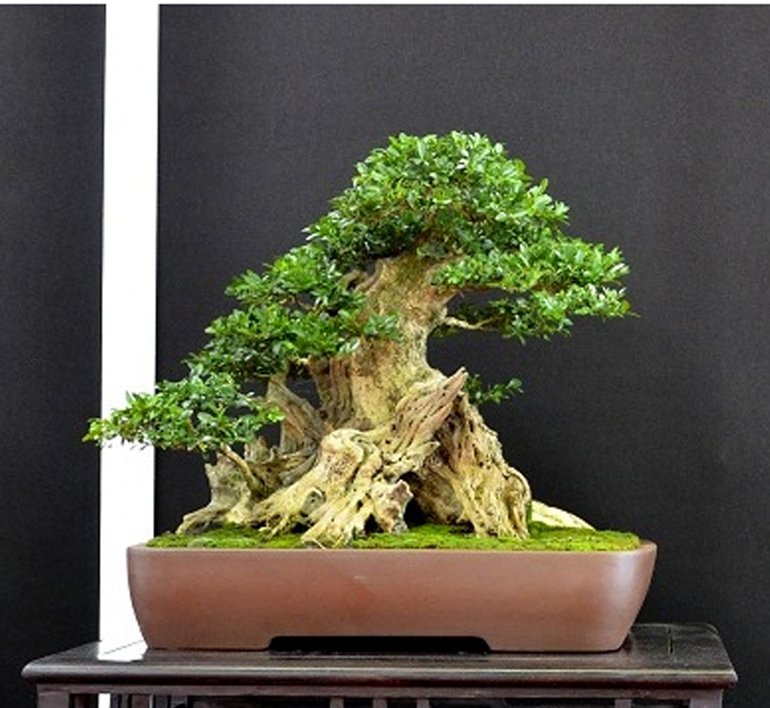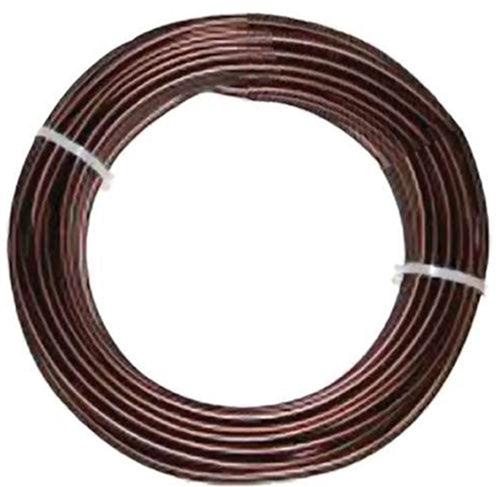
Aside from being a phenomenal tree and a great pot, there's a relaxed in-synch feeling, like the pot and tree are old friends. This might have something to do with the color, texture, soft lines and aged look of each. The color and feel of the stand fits right in too, while contrast is provided by its sharp rectangular lines. All together an excellent bonsai. The artist is François Gau (pot by Greg Ceramics). All three photos in this post are from Parlons Bonsai (I took the liberty to crop all three to bring the trees closer).
We featured Kingsville boxwoods a couple time this week, so continuing the theme (except for the Kingsville part). This post is from one we did on the 2013 European Bonsai San show. We’ve done some editing and have added a paragraph about wintering boxwoods.
Continued below…
This wild old tree is little more rough and rugged than the one above. That ruggedness and the long stretch of trunk without foliage, leans a little toward literati, though the lush foliage and deep pot betray that definition. If this were your tree, would you remove the strange branch on the left? Or maybe eliminate the inward growing foliage and create a jin? The artist is Raymond Claerr (pot by Isabelia).
The three trees shown here all have at least three things in common: They are all Boxwood bonsai (Buxus sempervirens). They all appeared in a 2013 bonsai show in Saulieu France (European Bonsai San Show). And, they all have powerful trunks.
Continued below…

When I first saw this tree, my eye went straight to the large hole at the base of the trunk and the jagged wood that frames it. It took a few moments and a more relaxed gaze to take in and appreciate the power of the whole tree. The artist is once again François Gau. The pot is Chinese and looks a lot like it might be Yixing.
I’ve had luck wintering boxwood indoors. I think it works best if you leave them out on a covered porch in the fall until night temperatures are well below freezing so they can experience at least a short period of dormancy (how cold depends on which type boxwood), and then bring them into a coolish place with plenty of light for the winter (old farmhouses often have rooms that aren’t heated and with adequate light… modern houses that are heated to 75F aren’t so good). If you live in a climate that has real winters but doesn’t get too cold, you can leave most boxwoods on a covered porch or in an out building all winter. If you live in a place with very mild winters, you can leave them out in the open.

